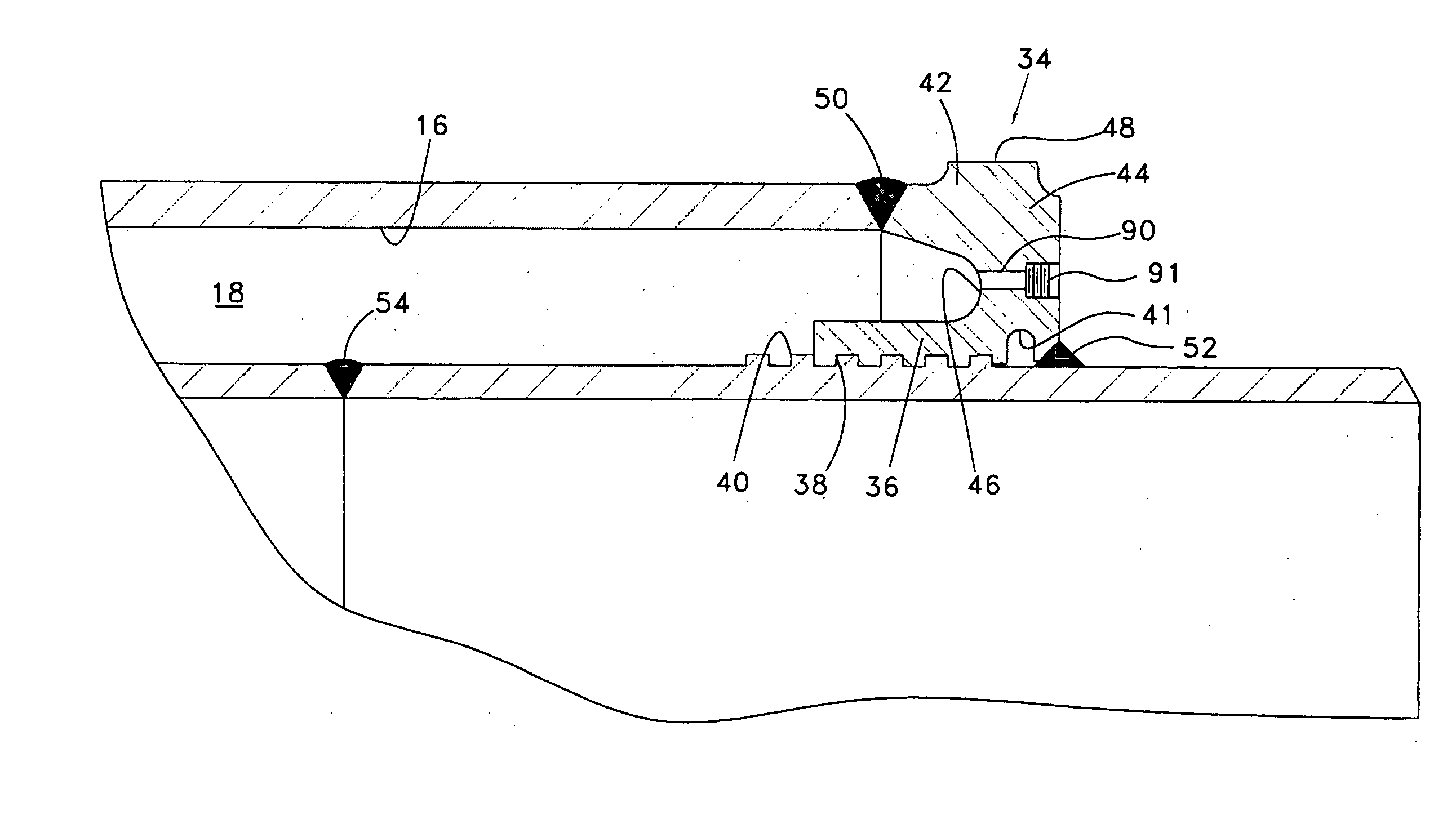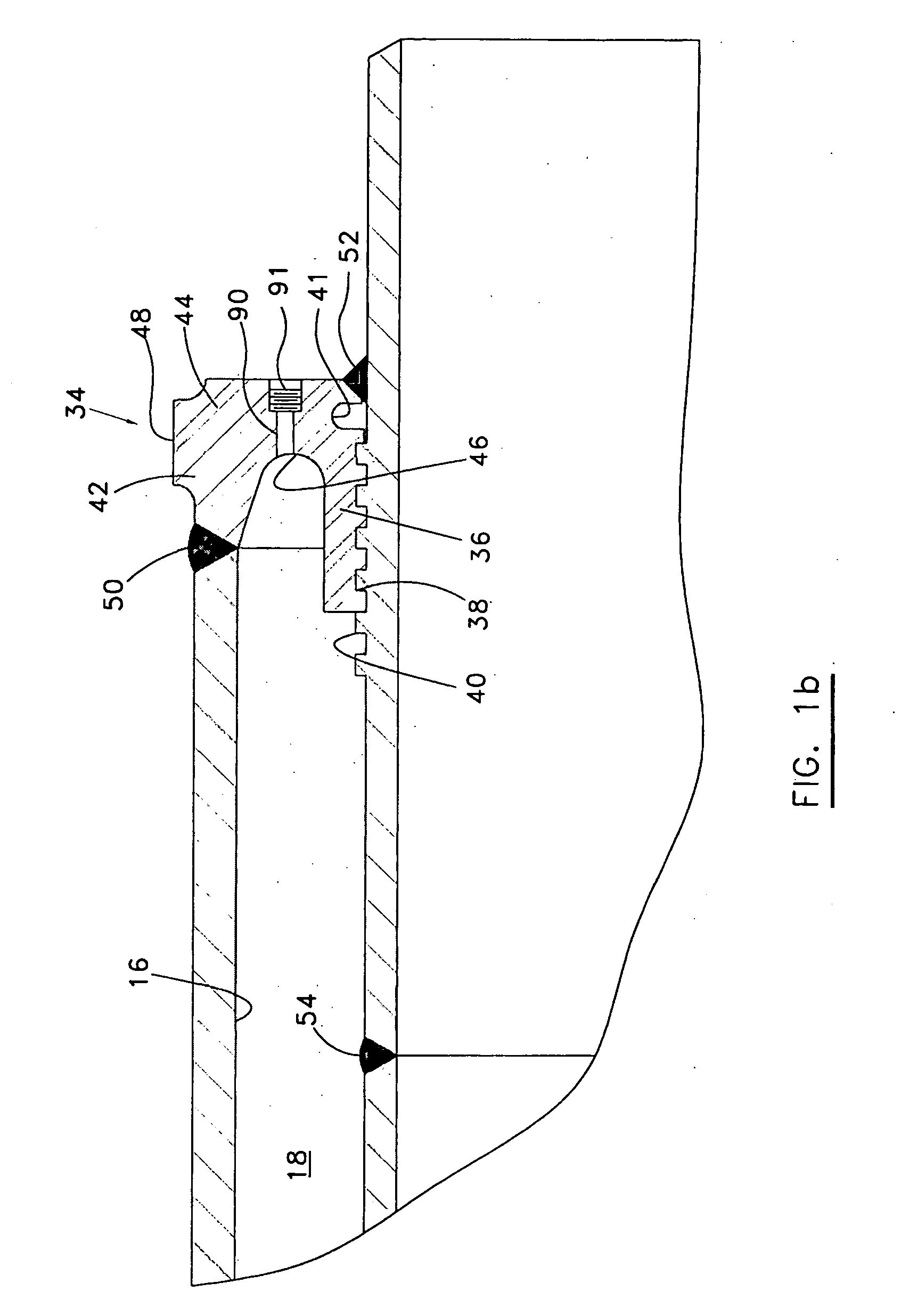Dual-walled piping system and methods
a dual-walled, piping technology, applied in the direction of fluid pressure sealing joints, pipe elements, mechanical equipment, etc., can solve the problems of catastrophic failure of such pipelines, high load and great stress, and large stress on the piping segments and, particularly, the connection, so as to reduce stress, minimize heat transfer, and improve load transfer control
- Summary
- Abstract
- Description
- Claims
- Application Information
AI Technical Summary
Benefits of technology
Problems solved by technology
Method used
Image
Examples
Embodiment Construction
[0027]FIGS. 1, 1a and 1b illustrate an exemplary dual-walled piping segment 10 that of a type used within a piping system to transport extreme temperature fluids. The piping segment 10 includes a radially inner carrier pipe 12 and a radially outer jacket pipe 14. The pipes 12 and 14 are preferably formed of steel alloys and other material suited for the thermal, pressure and corrosion issues as containment barriers. An annulus 16 is defined between the carrier pipe 12 and the jacket pipe 14 and is filled with insulating material 18. The carrier pipe 12 defines an axial fluid flow bore 20 along its length. The piping segment 10 has two axial ends 22, 24, which are preferably identical in construction. Details of the axial end 24 are shown in cross-section in FIGS. 1 and 1a. The end 24 includes a radially inner pup joint 26 that is of similar diameter as the carrier pipe 12 with a first axial end 28 that abuts the axial end 30 of the carrier pipe 12. The second axial end 32 of the pup...
PUM
 Login to View More
Login to View More Abstract
Description
Claims
Application Information
 Login to View More
Login to View More - R&D
- Intellectual Property
- Life Sciences
- Materials
- Tech Scout
- Unparalleled Data Quality
- Higher Quality Content
- 60% Fewer Hallucinations
Browse by: Latest US Patents, China's latest patents, Technical Efficacy Thesaurus, Application Domain, Technology Topic, Popular Technical Reports.
© 2025 PatSnap. All rights reserved.Legal|Privacy policy|Modern Slavery Act Transparency Statement|Sitemap|About US| Contact US: help@patsnap.com



